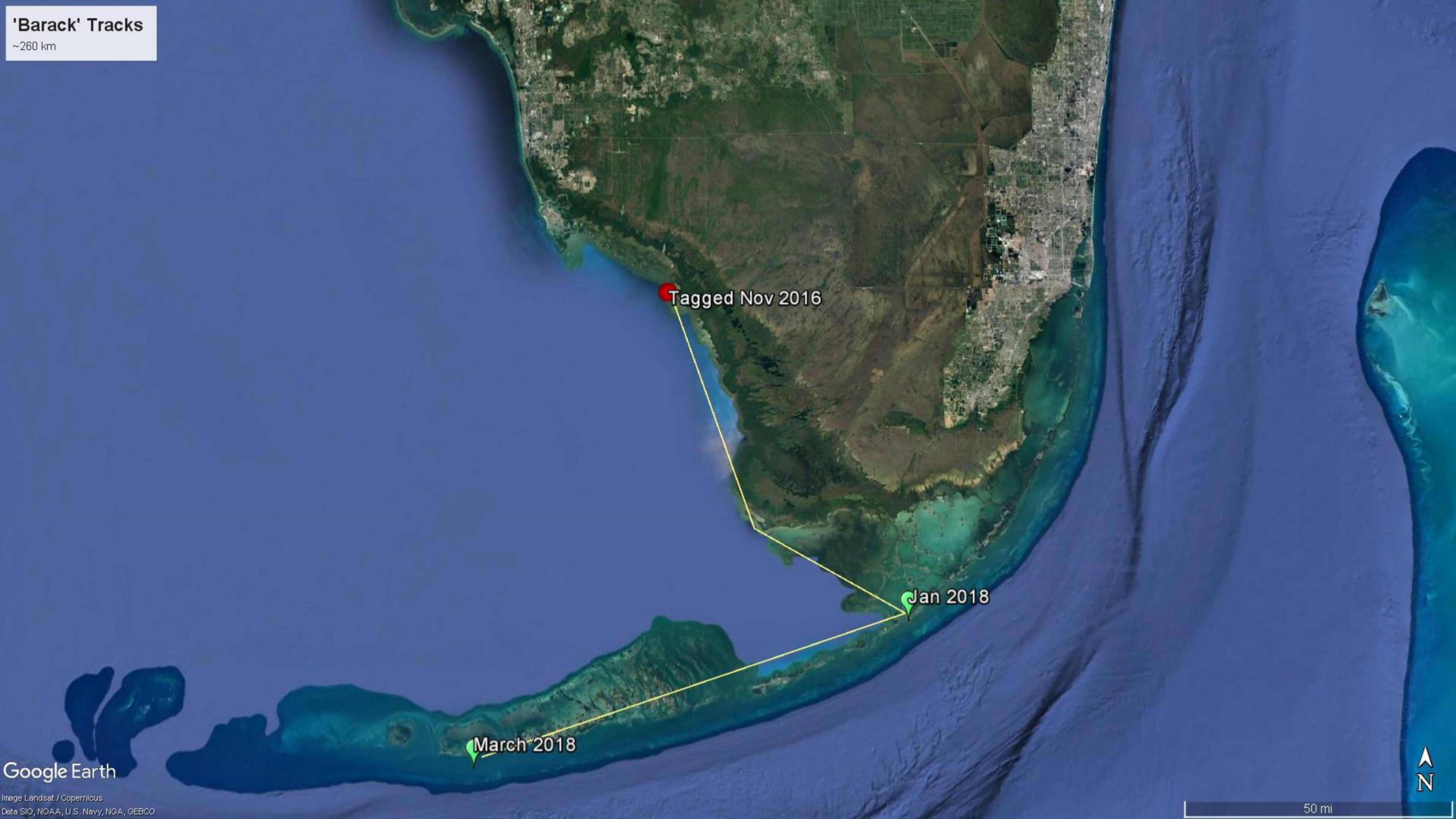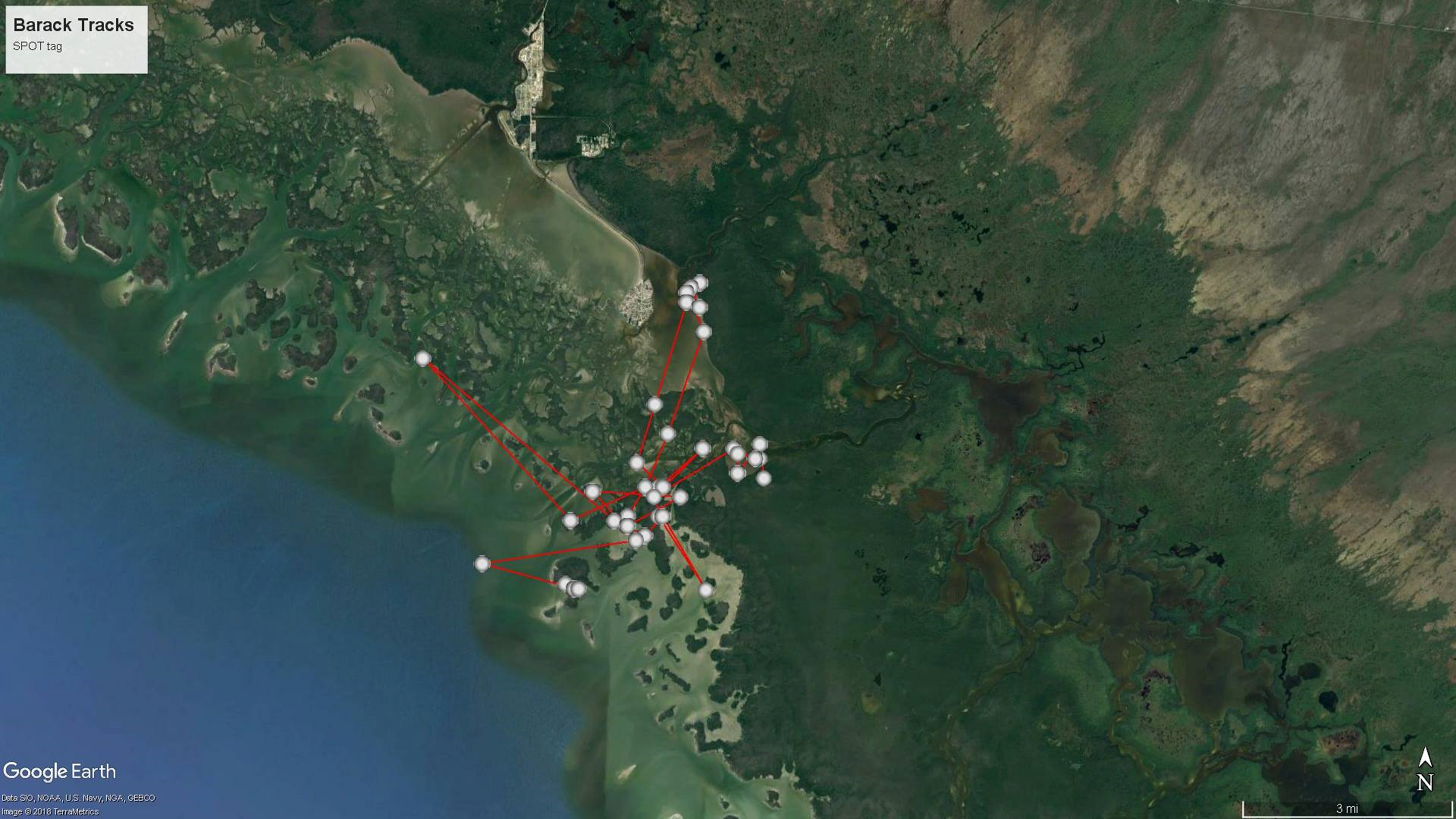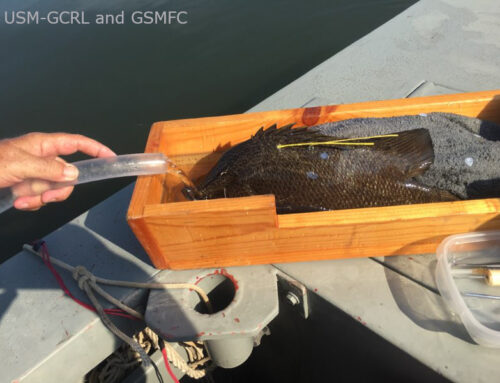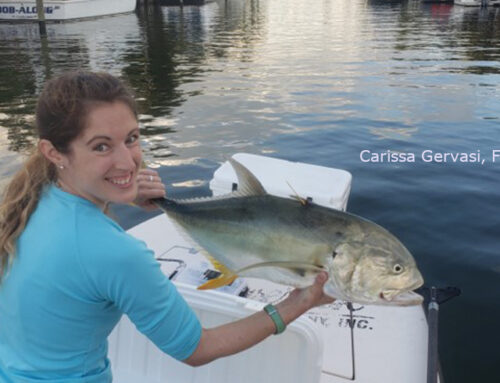Since 2016, researchers have been acoustically tagging and tracking endangered smalltooth sawfish in south Florida to better understand their movements and habitat requirements, pieces of information that are crucial to the conservation and recovery of this species.
In the fall of 2016, researchers tagged an 8.5-foot juvenile male smalltooth sawfish in northern Everglades National Park with a GPS-equipped satellite tag and 10-year acoustic tag. Only a month’s worth of data was collected from the satellite tag before it stopped reporting and showed that the sawfish remained in the general area in which it was tagged.
More than a year went by without any data or detection of the sawfish, leaving researchers to wonder where the sawfish had gone. With the help of the collaborative acoustic network iTAG the missing sawfish was detected in south Florida. He had traveled approximately 162 miles from northern Everglades National Park to the Florida Keys! Similarly, a 7-foot female sawfish, tagged near her male companion in 2016, displayed similar movements traveling an approximate 260 miles to the Florida Keys. These data are some of the first to show that larger juvenile smalltooth sawfish are capable of making long migrations.
These data are crucial to understanding habitats that are used by larger juvenile smalltooth sawfish and can ultimately help lead to the conservation and recovery of this species. All sawfish research is conducted under permit ESA 17787 in collaboration between NOAA SEFSC (John Carlson & Andrea Kroetz) and FSU (Dean Grubbs). To learn more information visit NOAA’s sawfish page: https://www.fisheries.noaa.gov/species/smalltooth-sawfish and for sawfish reporting please call 1-844-4SAWFISH




